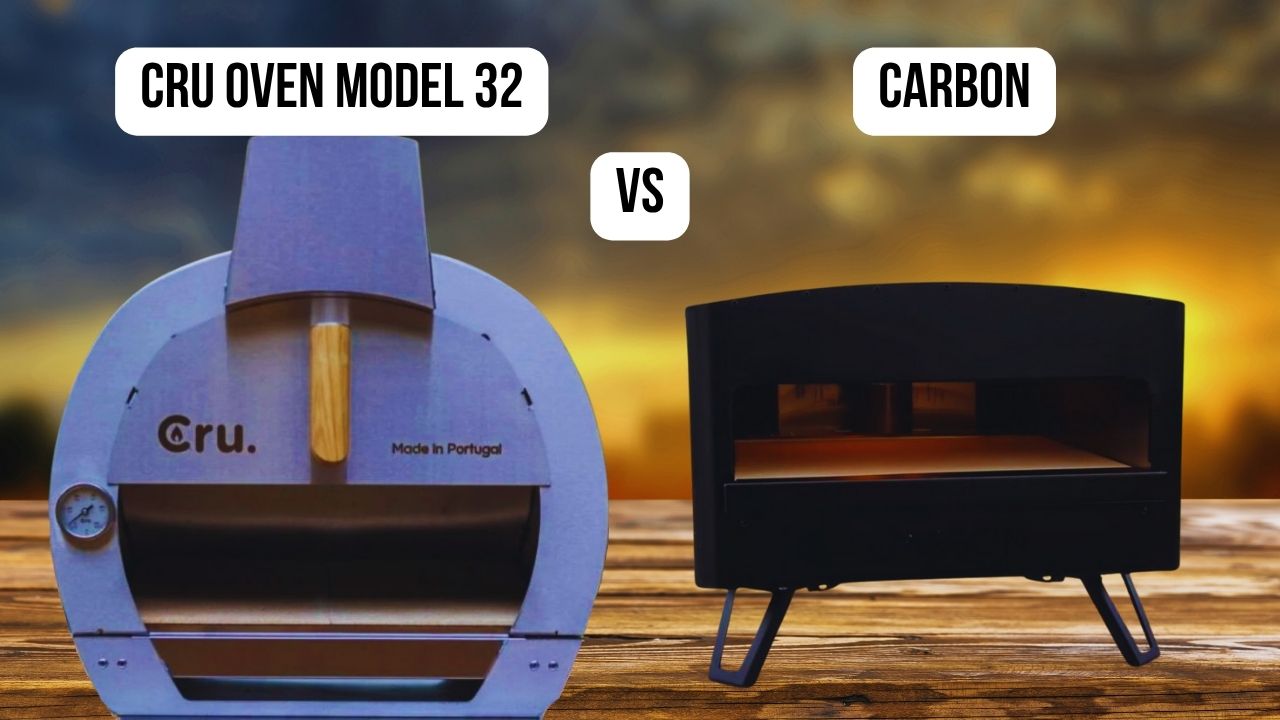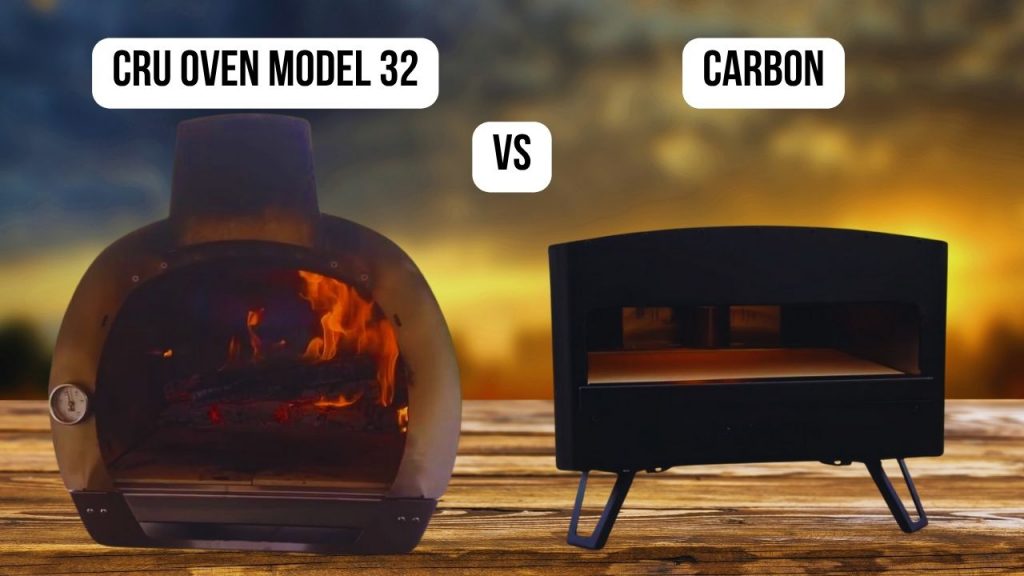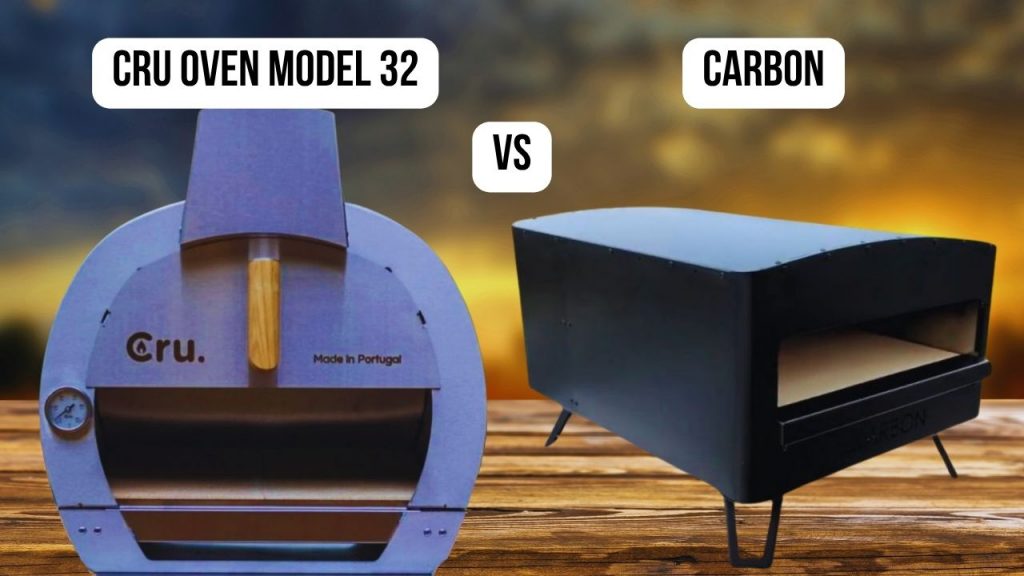I’m a restaurant chef with over 10 years of experience working in my kitchen at Dequte Restaurant LironBoylston, and today I’ll be comparing the Cru Oven Model 32 and the Carbon Pizza Oven, both of which I’ve personally tested in a professional setting. I compared their quality and materials, temperature control, shape, first-time usage impressions, power source, size, ease of cleaning, and conducted a real pizza cooking test to see how long it takes to achieve the perfect pie. If you’d like, you can also check out the thorough process I follow when testing pizza ovens in my separate article.
The Cru Oven Model 32 is a robust, dual-layer stainless steel wood-fired oven designed for versatility and authentic flavor. The Carbon Pizza Oven, on the other hand, is a gas-powered model with a dual-burner system and firebricks to achieve high, even heat quickly.
In this write-up, I’ve compared the Cru Oven Model 32 and the Carbon in detail, using my testing data.
Disclaimer: This article contains referral links that help keep my blog alive. If you decide to purchase through them, I’ll earn a small commission at no extra cost to you.
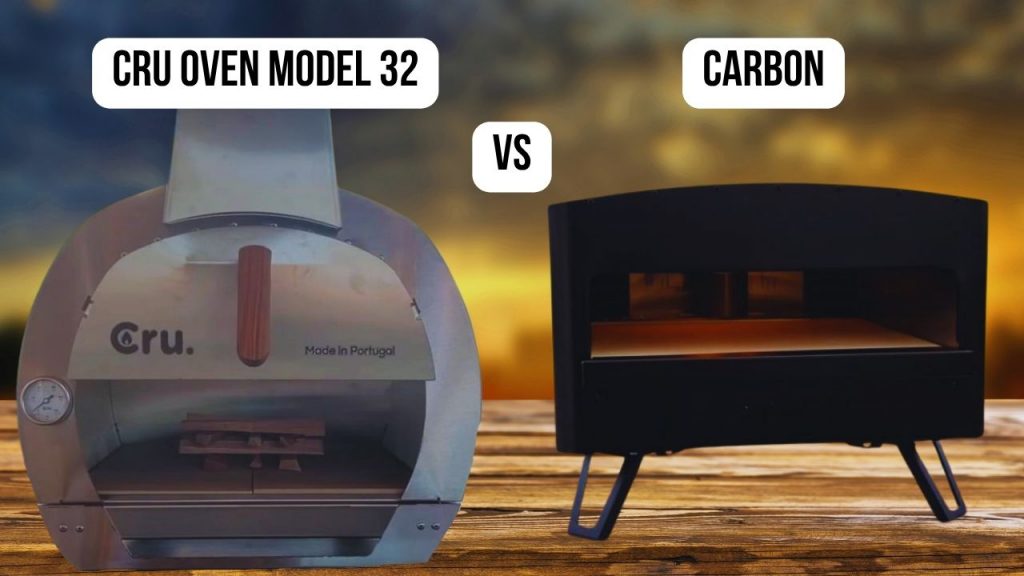
Cru Oven Model 32 VS Carbon: Quality and Materials
| The Cru Oven Model 32 is built in Portugal from thick 304 stainless steel, ceramic fiber insulation, and Cordierite pizza stones. The materials feel robust and give a reassuring sense of durability. The removable dome and quality steel make it feel premium and well-engineered for years of outdoor cooking. |
The Carbon oven uses stainless steel with a rust-resistant coating and includes firebricks for heat distribution. While solidly made, it has visible rivets and seams that feel a bit less refined compared to the smoother, more integrated design of the Cru Oven Model 32.
|
Cru Oven Model 32 VS Carbon: Temperature Control
| The Cru Oven Model 32 relies on wood or charcoal and achieves temperatures close to 900°F. Although it takes about 40 minutes to preheat fully, the heat holds quite steady once established. You get precise control by adjusting airflow and managing fuel placement, which feels satisfying if you enjoy hands-on cooking. |
The Carbon heats up impressively fast thanks to dual burners, reaching over 900°F in about 10–15 minutes. The top and bottom burners are adjusted with dials, which is convenient. However, the propane flame doesn’t offer the same wood-fired flavor or the gradual heat curve of the Cru Oven Model 32.
|
Cru Oven Model 32 VS Carbon: Shape
| The Cru Oven Model 32 has a barrel-shaped stainless steel body that promotes excellent airflow around the pizza. This shape reduces hot spots, making the crust evenly crisp. Its larger opening and tall dome also allow for more flexibility, like baking bread or grilling. |
The Carbon has a boxier shape with a low front opening and a square pizza stone. The compact design keeps heat concentrated but slightly limits what you can fit inside compared to the Cru Oven Model 32.
|
Cru Oven Model 32 VS Carbon: First-Time Usage Impressions
| When I first unboxed the Cru Oven Model 32, it felt solid and thoughtfully designed. Assembly was quick, and the removable dome was a standout detail for cleaning and handling. Lighting the fire took some practice, but once I got it going, the experience felt authentic and rewarding. |
The Carbon made a great first impression with its sleek matte finish and clear branding. The propane ignition was effortless, and the heat ramped up quickly. However, the learning curve involved figuring out how to balance the burners so the stone didn’t overheat on one side.
|
Cru Oven Model 32 VS Carbon: Power Source
| The Cru Oven Model 32 uses wood or charcoal, which imparts deep smoky flavor to the crust and feels more traditional. The choice of fuel adds flexibility and a sense of ritual that many enthusiasts enjoy. |
The Carbon runs only on propane or natural gas. While extremely convenient, it does lack the natural wood-fired taste that makes cooking in the Cru Oven Model 32 special.
|
Cru Oven Model 32 VS Carbon: Size
| The Cru Oven Model 32 is moderately sized and easy to maneuver at 56 lbs. It offers a cooking surface of 20” x 16,” which is large enough for 15-inch pizzas and tall enough for bigger dishes. |
The Carbon is slightly heavier (60 lbs) but compact overall, with a 15” x 15” stone and low 3.75” front opening that restricts some taller foods.
|
Cru Oven Model 32 VS Carbon: Ease of Cleaning
| The Cru Oven Model 32 is very simple to clean thanks to its removable dome. Once cooled, you just lift the top off, sweep out the ash, and wipe down the surfaces. This feature makes maintenance easier than many ovens I’ve tried. |
The Carbon has fewer internal components to remove, but cleaning around the burners and inside corners can be more time-consuming. The included brush is helpful, but soot buildup requires attention.
|
Pizza Cooking Test
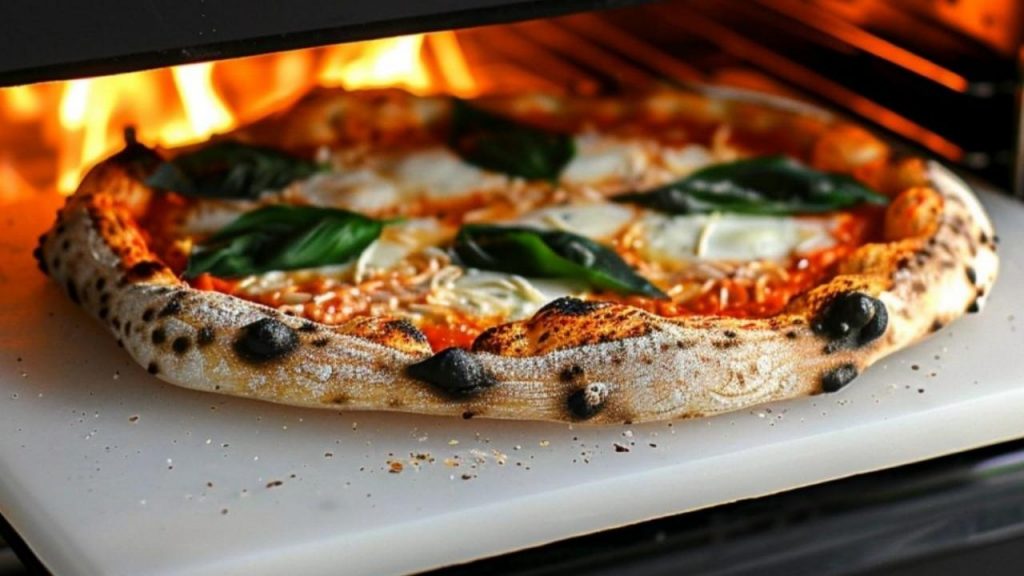
To see how both ovens perform in real use, I prepared classic Margherita pizzas in each.
With the Cru Oven Model 32, the preheating process took about 40 minutes to bring the stone up near 850°F. Once it was ready, I slid the pizza in and kept the door partly closed to hold the heat. The Margherita cooked in about 90 seconds, developing a beautifully even leopard-spot crust and a pronounced wood-fired aroma. The base had a perfect balance of chew and crispness, while the toppings melded into a rich, slightly smoky flavor.
In comparison, the Carbon pizza oven was much faster to preheat, taking only 10–12 minutes to get the stone to around 740°F. When I put in the pizza, it baked in about 80 seconds. The top browned quickly under the upper burner, while the underside was evenly cooked after I let the stone heat longer on my second attempt. The result was a pleasant, lightly charred crust, though without the same depth of smoky flavor you get from wood in the Cru Oven Model 32. The cheese melted beautifully, and the sauce kept a bright, fresh character.
Overall, both ovens turned out excellent pizzas, but I preferred the richer aroma and rustic texture that came from the Cru Oven Model 32.
How We Tested
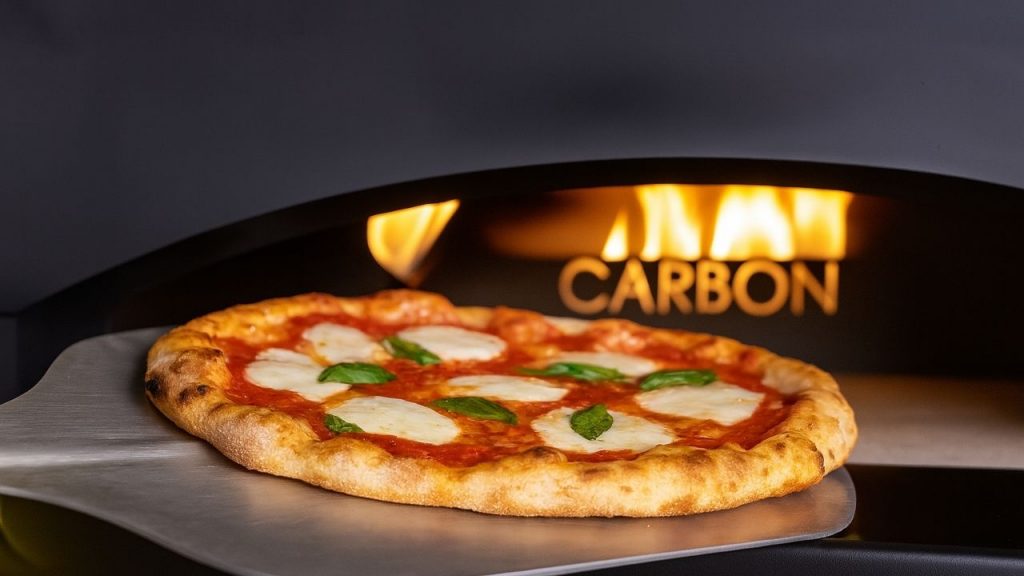
To evaluate both the Cru Oven Model 32 and the Carbon pizza oven, I followed the same step-by-step process in my professional kitchen to keep the comparison fair. I preheated each oven to their optimal baking temperatures, allowing the stones to come fully up to heat before cooking. For each, I prepared fresh Margherita pizza dough with the same hydration and thickness, then topped it with identical amounts of sauce, mozzarella, and fresh basil.
During baking, I timed how long it took each oven to heat up and how long it took to cook the pizzas to a properly done crust and bubbling cheese. I monitored the stone and air temperatures with an infrared thermometer and noted any fluctuations while cooking multiple pizzas in a row. After each batch, I assessed how evenly the crust baked, how well the toppings cooked, and whether there were any issues with hot spots or heat loss.
This hands-on approach let me see how each oven handled real-world use, including ease of setup, temperature control, and the consistency of results from one pizza to the next.
Conclusion
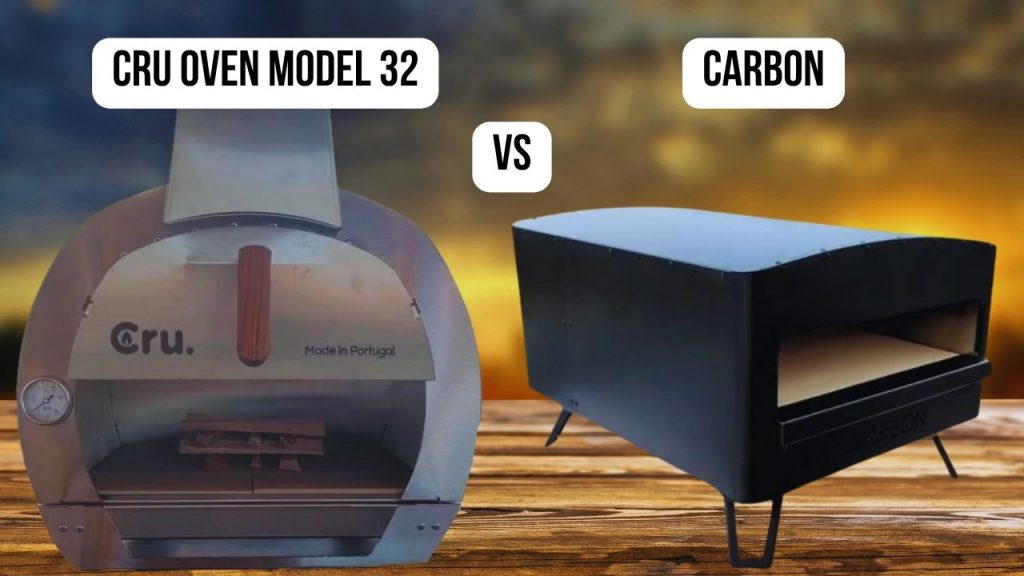
Ultimately, whether you choose the Cru Oven Model 32 or the Carbon pizza oven depends on what matters most to you—whether it’s the traditional feel and versatility of the Cru or the high heat and gas convenience of the Carbon. Both ovens have their strengths and can make excellent pizza at home. If you decide to buy one, I’d highly appreciate you using my referral links to purchase. I’ll earn a small commission at no cost to you, which helps keep this blog alive. Here are the links:
Make time to see the top pizza ovens list.

